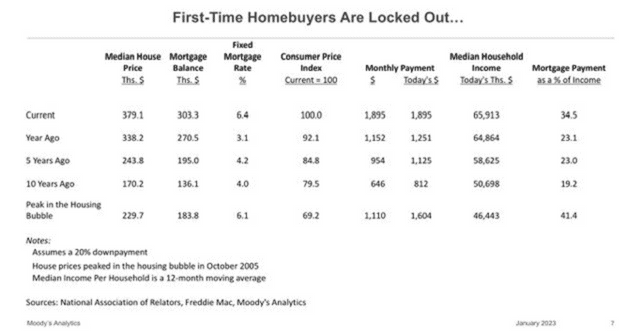
There are headlines everywhere proclaiming an imminent housing crash because of the affordability gap. This headline from Business Insider last week is just one example: “A chief economist who called the 2008 housing bubble says home prices will fall another 15% over the next year as they remain too disconnected from buyer incomes and the supply of homes on the market grows.”
Yes, prices have shot through the roof, but what the doomsayers ALWAYS fail to account for is the fact that incomes have climbed markedly too! Average hourly earnings have more than doubled since 2000, and they are considerably higher than where they were at the peak of the pre-2008 housing bubble.
Dave Stevens is a 36-year mortgage industry veteran, the former CEO of the Mortgage Bankers Association, and now the owner of a prominent consulting firm. He posted the below article on LinkedIn recently, and I am sharing it because it is short, concise, and public.
Barry Habib has been aggressively making similar points over the last year too, so I could easily share substantially more data. I will, however, limit today’s blog to Mr. Stevens’ point to avoid overwhelm.
TLDR: Average debt ratios (the best indicator of “affordability”) are now LOWER than where they were prior to the 2008 mortgage meltdown. AND – debt ratios will drop even further as rates fall this year.
From Dave Stevens:

Housing Affordability With Higher Rates. A Closer Look
I’ve had many ask me about higher rates and affordability and whether today’s rates might be enough to repeat the 2008 recession environment. The short answer is no.
The chart I posted here is from January of 2023 from Dr. Mark Zandi, the renowned Chief Economist for Moody’s Analytics. The important thing to do here is recognize that while rates have risen as have home prices since 2008, wages have as well. So while current median debt-to-income ratios are higher than a year ago, they are lower than during the peak of the housing bubble.
In other words, the inflation-adjusted all-in perspective shows that affordability is still far better than during the housing bubble peak. As rates continue to fall throughout the year that picture will only get better.
Perspective is an interesting thing. It often comes from an emotional view and frequently without data to support it. When you apply real data, the perspective can change. Keep in mind, Dr. Zandi used a 6.4% fixed rate. Today you can get a loan at about 6%* and no points (approximate, consult a loan representative).
And because I cannot post more charts in these LinkedIn posts, just remember that the supply of homes for sale today is a fraction of what they were at the peak of the great recession and household formation is more than double of what it was during those years. And yes, I have that data too. Maybe for a later post.
Jay Voorhees
Founder | JVM Lending
(855) 855-4491 | DRE# 1197176, NMLS# 310167























